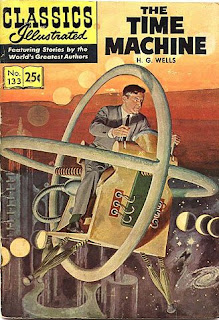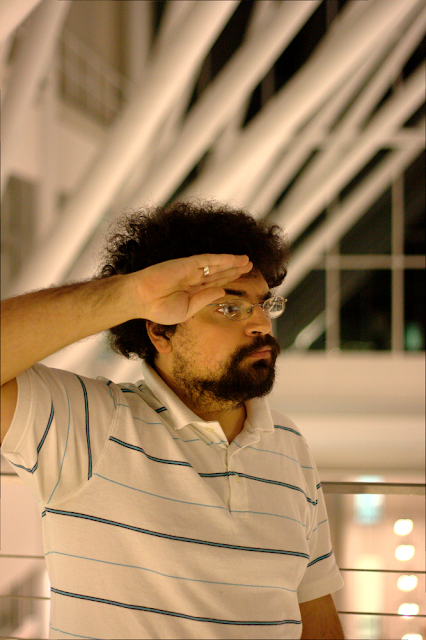Physics Challenge Award Show II
 Not a DeLorean. You're doing it wrong.
Not a DeLorean. You're doing it wrong.
[Update: Prize Update / Added link to full solutions] Welcome to the
second Physics Challenge Award show!
[APPLAUSE]
Our judges have deliberated for several units of time and I now have in
my hands the envelope holding our list of winners. I could easily just
tell you who won right now and save everyone some time, but award shows
need some suspense to work effectively, so let's first give some tedious
background information!
[APPLAUSE]
You may recall that the winner of the first Physics
Challenge
contest won a CRC
Handbook.
We will not be giving out CRCs this time around. We felt that such a
prize was far too expensive impersonal, so we have opted this year
for something much cheaper from the heart. The following prizes will
be awarded to our top three solutions:
First Prize: Our first prize winner will receive an actual
back-of-an-envelope used in one of our posts (gasp!) signed by all the
of the members of the Virtuosi that I can find at colloquium tomorrow.
But that's not all! Alemi will also salute in your general direction.
Second Prize: For our second prize winner, we appear to have run out
of envelopes... but Alemi will still salute in your general direction.
You will not see him do this, but you will feel a major disturbance in
the Awesome Force (mediated, of course, through the midi-chlorian
boson).
Third Prize: You will receive no material prize, but on your
deathbed you will receive total consciousness. So you've got that
going for you, which is nice.
Let's first remind everyone what the Challenge problem was. The full
text of the problem can be found
here,
but the gist is basically this: You've created a time machine and you're
biggest fear is that you'll be stuck back in the past without any way to
communicate to the future that your design worked and you deserve all
kinds of Nobel prizes. The solution should be able to last long periods
of time (who knows how far back in time you'll go?), should maximize the
chances of modern people finding it, and be able to convince people that
you have in fact gone back in time.
Alright, let's get to some solutions already!
First Place: The first place solution comes from Christian, who uses
some biological wrangling to solve the time traveller conundrum. With
some information from the
announcement
of "synthetic life" and some bio how-to from an entity known only as
"steve," Christian plans to implant a message into the DNA of bacteria.
The message will contain his name, identifying information, and the url
of a website which will (presumably) contain a video of him with one
hand outstretched saying "Nobel prize please."
Let's see how this solution satisfies our criteria for a successful
solution. Does it work for an arbitrary amount of time? It appears to,
so long as the bacteria manage to survive and the message doesn't become
too garbled over time (perhaps some error-correction might be useful).
Additionally, if one is worried about introducing non-native bacteria to
the wild you could bring back a bunch of bacteria that were known to
exist over wide periods of time and just release those alive at the
time. Will modern humans find it? It seems that geneticists are
decoding just about any genome they can get their hands on, so this is a
strong possibility. Would it convince people that someone travelled in
time? If the bacteria has dispersed enough, shows enough variation over
geographic regions, and contains specific identifying information about
a missing person who has allegedly created a time machine, I think
that's pretty strong evidence. Neato, gang!
Second Place: The second place solution comes from Kyle, who offers
a space-based answer. Kyle suggests etching detailed plans of the time
travel mechanism (flux capacitor) onto a durable metal and putting that
bad boy into space. He suggests that anyone capable of building a fully
functional time machine should have no problem launching a small
satellite. Fair enough. Additionally, the satellite would use some kind
of solar power or the like to produce a low-power radio signal. In fact,
this signal would only need to spit something out once every year or ten
years or something. Since radio communication precedes space
exploration, the detection of an artificial satellite sending a message
would attract a fair deal of attention. The plans and successful
reproduction of the time machine would then seal the deal.
Does this solution satisfy the necessary conditions? I think so.
Assuming all goes according to plan, this would easily be detected by
modern people and, assuming the time machine plans are accurate, would
provide indisputable proof. My main concern would be that the satellite
could be launched and survive to the present. Modern satellites need
constant boosts to stay in orbit, without which they fall back onto
Earth and burn up. One potential solution would be to put it on the
Moon. This is technically much more difficult, but hey, you just created
a time machine! Also, putting it on the moon then allows for a totally
rad recreation of the
Monolith scene
in 2001: A Space Odyssey.
Third Place: The third place solution comes from Yariv. Though Yariv
did not submit a solution through the proper channels (he follows no
one's rules, not even his own), he was overheard to give a solution.
While the Physics Challenge planning committee was discussing the
problem over lunch, Yariv flippantly dismissed the entire premise as
"trivial" and suggested a two-word solution: "radioactive paint."
Personally, I like the idea of bewildered archaeologists finding a cave
painting of Yariv riding a dinosaur done using a variety of radioactive
paints which all date back 200 million years. For this amusement, I
award Yariv the third place prize for this contest. As a member of the
Virtuosi, however, Yariv is ineligible to receive a prize and instead
receives 5 demerits on his record for his willful disregard of our
institution's rules and excessive flippancy. One more slip-up and you'll
lose your badge!
Full
solutions
are up on the Challenge website. Thanks for joining us for this episode
of Physics Challenge Award Show, and thanks to everyone who submitted a
response! First and Second Prize Winners: We present the following
in partial fulfillment of our prize offer.
 For those who solve problems (he salutes you)
For those who solve problems (he salutes you)
Comments
Comments powered by Disqus